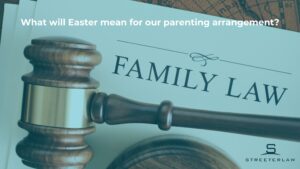Picture this: You’ve provided services to a customer and they have not paid your final invoice. Your invoice is for $12,000 and you’re out of pocket. You file a Statement of Claim and no Defence is filed by your customer. After 28 days, you obtain Default Judgement. What next?
You’ll be pleased to know that there are a range of enforcement options on a debt. These are:
1. Examination Notice/Examination Order
An Examination Notice is served on a judgement debtor, requiring them to complete details as to their financial circumstances. Judgement debtors rarely complete this form, resulting in an Examination Order being filed. This compels a debtor to attend Court before a Registrar and present their financial circumstances for Examination. From this Examination, we are able to ascertain whether a debtor has the ability to pay their debt, either from funds in the bank or income they receive. Failure to attend Court for Examination may result in your debtor being arrested by the Sheriff and forced to attend the Court.
2. Garnishee Order
After establishing your debtor can afford to pay your debt because they have funds in the bank or sufficient income, we can make an application to the court, requesting payment of the debt through the identified channel. The financial institution or employer may either pay the debt in full, in accordance with the Garnishee Order, or advise that the debt is not able to be paid due to insufficient funds.
3. Bankruptcy
If your debt is not paid from the Garnishee Order, you may wish to apply for the Bankruptcy of the debtor. You are only able to do this if your debt is more than $10,000. This Application is made with the Australian Financial Securities Authority (AFSA). The Bankruptcy Notice can follow the debtor for a period of 7 or 10 years.
If Bankruptcy proceedings are successful, this may result in the debtors salary being used to repay the judgement debt, or a trustee may be appointed to control the debtors assets to sell them, in order that they repay the debt.
4. Writ for Levy of Property
This is an order to the sheriff to seize property belonging to the debtor and to sell it at auction. A sheriff will determine what items are of significant value and sell this property to recover the debt owed to you. However, not all items of property can be seized and a list of exclusions apply.
5. Charging Order
This is a right that the Supreme Court of NSW grants to you, allowing you to secure the judgement debt, against a specific asset of the judgement debtor. This will eventually permit you to take ownership of that asset, to satisfy the judgement debt. There is a set list of assets that can be subject to a charging order, which we can advise you on if this applies to you.
Non-payment of a judgement debt is a situation that happens all too often for our clients. The expert debt recovery team at Streeterlaw can assist with the next steps and navigating the enforcement options with you, based on your situation. Contact us on (02) 8197 0105 to recover your debt today!









